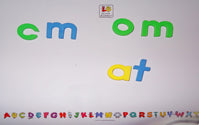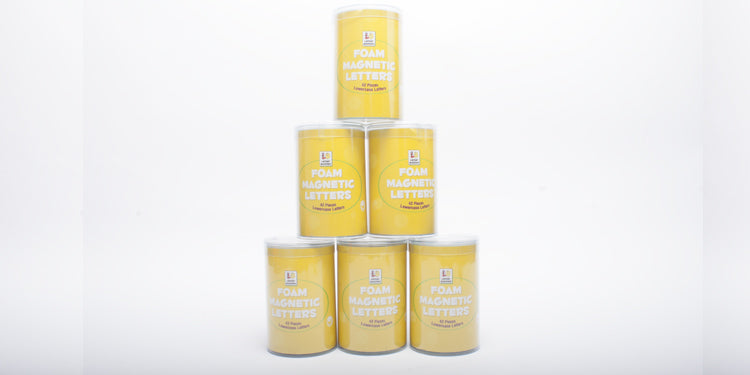 This is the tenth and last of a progressive series of posts that we will be featuring on the Hameray Blog every Thursday for 10 weeks (for the other posts,
click here
). It's authored by special guest blogger Paula Dugger, who is an educational consultant with a rich-literacy background that includes serving as a Reading Recovery Teacher/Teacher Leader, first grade teacher, Title I and high school reading teacher, as well as a Reading Coordinator. Hameray is thrilled to be able to share with you Paula's classroom-tested ideas and experience in helping young learners achieve their early literacy goals.
This is the tenth and last of a progressive series of posts that we will be featuring on the Hameray Blog every Thursday for 10 weeks (for the other posts,
click here
). It's authored by special guest blogger Paula Dugger, who is an educational consultant with a rich-literacy background that includes serving as a Reading Recovery Teacher/Teacher Leader, first grade teacher, Title I and high school reading teacher, as well as a Reading Coordinator. Hameray is thrilled to be able to share with you Paula's classroom-tested ideas and experience in helping young learners achieve their early literacy goals.
Magnetic Letters and Cognitive Development
Activities using magnetic letters can help in cognitive development both consciously and unconsciously in young children. The letters are colorful, three-dimensional, and they lend themselves to movement and touch. Letters are a part of the print we see around us in the world. Using soft foam letters (Hameray offers a great set of uppercase and lowercase foam letters), children can learn many skills:
-To categorize by sorting, matching, and classifying
-To differentiate colors, shapes, and letters
-The concept of letters by name, sight, shape, and sound
-The concept of words by sight or by putting together sounds to form words
As previously mentioned, my series of guest blogs is on specific activities that use magnetic letters to help with the cognitive development of preschoolers. No activity should exceed five to ten minutes depending upon the age, ability, and interest of the child. These activities should be seen as fun games, and each will be a little more rigorous than the one before. The blogs will be divided into four groups:
-Teaching colors
-Teaching similarities and differences (or comparing and contrasting)
-Teaching the alphabet (letter names)
-Word analysis (making words)
Using Magnetic Letters to Make Words
Once a child has become familiar with recognizing letters by name and even forming letters, it is time to introduce the concept of words. Putting together letters in a certain order will produce a word. Words are everywhere. The objective of this blog post and the previous one is to help the child learn familiar words such as their name by using magnetic letters. This activity will help the child to form words that s/he can easily read and write. Having a set of core words that s/he can read and write will help set the stage for success once formal schooling begins. Whenever introducing a task, make sure the child understands what s/he is to do. A great framework is listed below that demonstrates how to scaffold an activity by modeling and gradually releasing the activity to the child.

Materials used in this Activity: Foam Magnetic Letters and Magnetic Whiteboard

Activity #10: Unscrambling Letters to Make Words, Part 2
If the activities listed in last blog (Activity #9) were completed successfully, the activities that follow will help determine what the child can do independently. Please see the last blog for more information.

Start this activity by providing the child with letters or word s/he may know such as his/her name. Scramble the letters and ask the child to make specific word(s).

If the letters are to form Carter’s name, then say, “Can you unscramble the letters and make your name?”


Continue with additional words, being careful in the beginning to provide only the letters needed to correctly spell the word.

The next step to make the activity a little more rigorous would be to provide letters that can be for two or three words. Then ask the child to find the letters to make a specific word. For example, place c , m , a , o , m , and t out.

Then ask, “Can you make the word mom ?”


Next say, “Can you make the word at or cat ?” and so on.
The most rigorous activity would be to use (for example) the same letters in the activity above, but say, “Can you find some letters to make a word you know?” Asking the child to generate a word from a group of letters is a very high-level cognitive activity.
Children love to learn, and learning can be made fun in many ways. I hope the ideas presented in these blog posts using magnetic letters—along with immersing your child in literacy by reading daily and presenting opportunities to write—will help set him or her child on a successful journey to learning.
This was the tenth and last activity in the series. If you'd like to see the earlier lessons, click here !
- Paula Dugger
~~~
Paula Dugger has a B.S., M.Ed., and Reading Specialist Certification from The University of Texas at Austin and Reading Recovery training through Texas Woman’s University. Paula does educational consulting and training through Dugger Educational Consulting, LLC and can be contacted at np.dugger@att.net
Paula and her husband Neil are parents to two wonderful daughters, Alicean and Ashley, two sons-in-law Kevin and Patrick, and grandparents to Carter. She also raises registered Texas Longhorns on the weekends. The longhorn cattle are featured in her first book published by Hameray Publishing Group, titled Longhorns .
If you'd like to order some magnetic foam letters to try out this activity for yourself, you can find them on the Hameray website. If you're teaching at this stage of literacy, you might also be interested in the Letter Buddies books. Click on the images below to see some key features of the series!






















































